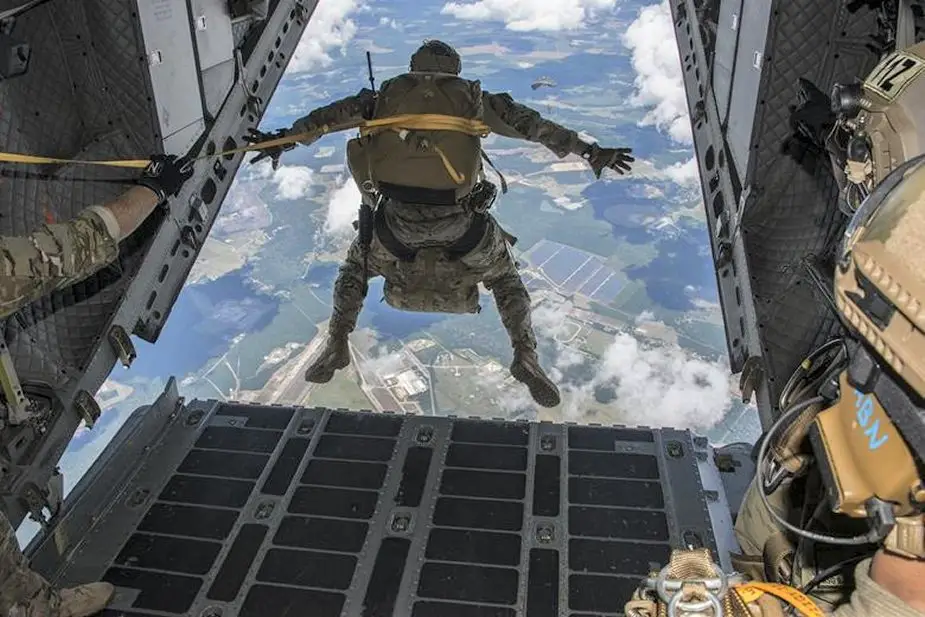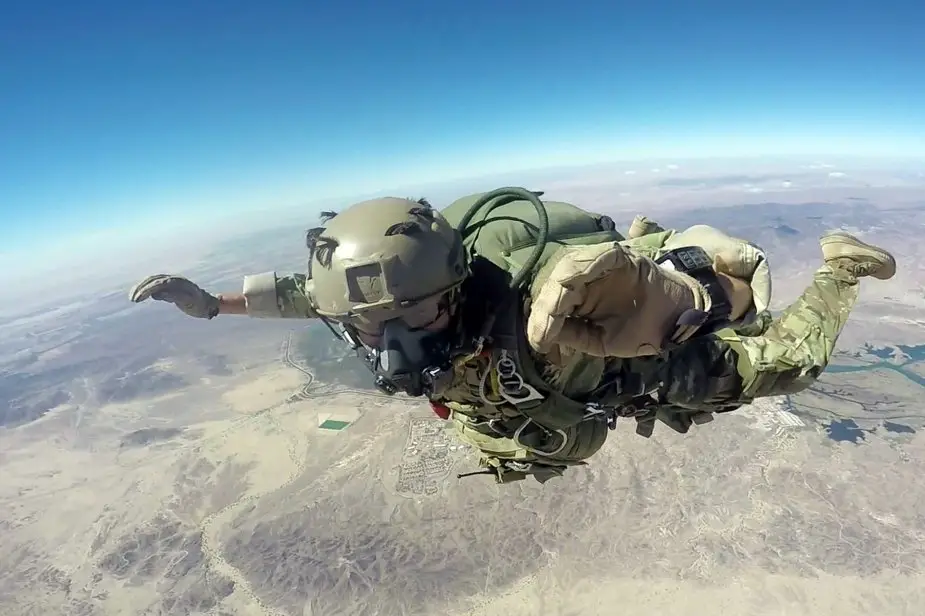Breaking news
US Special Ops look for parachute to deploy above 25,000ft for standoff missions.
The US Army Airborne and Special Operations communities are looking for improvements to the RA-1 Advanced Ram Air Parachute System which would allow paratroopers drop from aircraft flying at altitudes greater than the current 25,000ft limit, Flight Global reports.

A U.S. paratrooper fitted with an RA-1 Double Bag Static Line System exits an Alenia C-27J Spartan (Picture source: U.S. Army)
The US Army Contracting Command made known its interest in parachute upgrades via a 7 January request for information notice, posted online. “The Army is interested in canopies that can be deployed at a minimum jumper weight of 360 pounds at increased exit speed and altitudes not to exceed 35,000ft [mean sea level],” the service says. It adds that the system would be used for “high-altitude standoff personnel parachute operations”.
The ability for a parachute to deploy from a higher altitude would give it a greater glide range, also known as a standoff, allowing aircraft to drop paratroopers from distances further away from dangerous surface-to-air missiles on the ground. A greater range also gives the military a greater selection of landing sites, making it more difficult for the enemy to predict where soldiers are massing and what their potential objectives might be.
The RA-1 is relatively new to the US Army, reportedly first being used in 2014. Compared to its predecessor, the MC-4 parachute system, it boasts improvements in glide performance, canopy handling and weight carrying capacity, according to manufacturer Airborne Systems. The steerable parachute has a glide ratio of 4:1 and can carry up to 204kg (450lb). The canopy’s stabilizers are also designed to be quieter than previous systems, making the parachute stealthier, says Airborne Systems.
For its new high-altitude parachute variant, the US Army wants canopy designs that are currently at a Technical Readiness Level 6 or higher, a stage where manufacturers are ready to demonstrate a prototype. The improvements must integrate into the existing RA-1 parachute system, the service says.
The ability to drop troops and equipment from aircraft and glide into a landing zone is increasingly of interest to the USA’s armed forces and allies. For example, Flight Globals recals, Yates Electrospace is manufacturing an unmanned cargo glider, the Silent Arrow GD-2000, that can carry a gross weight of 907kg (2,000lb) with a glide ratio of 8.4 to 1, which translates to a standoff range of 64.4km (40mi).

Army Reserve Staff Sgt. Justin P. Morelli, a combat cameraman assigned to the 982nd Combat Camera Company, 335th Signal Command (Theater), practices his freefall techniques during a four-week Freefall Parachutist course in Yuma, Arizona. Morelli recently successfully completed the course, becoming the first Army Reserve combat cameraman to do so. (Picture source: US Army/Sgt. 1st Class Brent Powell)


























